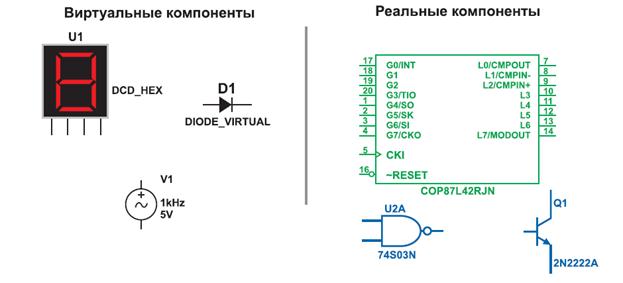FAIRS AND EXEBITIONS
Task 1. Read the text and write out unknown words
FAIRS AND EXHIBITIONS
The first world industrial exhibition was held in London in 1951. It was of a great success. It displayed exhibits of 40 participating nations and the number of visitors reached over six million. Since then world industrial expositions have had colourful history. Many such have been held, some of them on a large scale. They have changed not only in size and scope, but also in character and overall purpose. Such events provided opportunities for exchanging scientific, technological and cultural achievements of the people of Europe, America, Asia and Africa. Beginning with early 60s, international expositions began to take new forms, trying to emphasize not only technological progress, but also other aspects of life. They became festivals of industry and culture. Fairs and exhibitions provide an opportunity to establish profitable contacts and promote mutual understanding among different nations. Every year a lot of international and specialized exhibitions and fairs are held in different countries of the world. The number of countries and companies who take part in them is growing from year to year and the scope of fairs and exhibitions is becoming larger. The display during these exhibitions includes a wide range of exhibits which show the latest achievements in different fields of industry, science and agriculture of many countries. Usually fairs and exhibitions are crowded with visitors, who show much interest in the exhibits on display. At international and national exhibitions commercial centers are established where participants can negotiate the sale and the purchase of different goods. Every exhibition is an eye-opening experience and also a method to advertise products. Fairs and exhibitions are usually held under various mottoes: people and progress, peace and progress through economic cooperation and so on. International fairs and exhibitions pave the way for the consolidation of friendship among countries and nations. Task 2. Translate the following words виставка ярмарок експонат приймаючий участь масштаб/розмір межі/рамки характер намір/мета досягнення прибутковий підвищувати/сприяти спільний співробітництво зміцнення
Task 3. Translate the following word combinations industrial exhibition great success participating nations large scale size and scope exchanging scientific, technological and cultural achievements overall purpose technological progress science and agriculture opportunity to establish profitable contacts mutual understanding wide range the latest achievements industry and culture crowded with visitors the sale and the purchase to advertise products various mottoes consolidation of friendship Task 4. Answer the following questions 1. When was the first world industrial exhibition held? 2. Why can most of the international expositions be called festivals of industry and culture now? 3. Why are exhibitions and fairs growing in size and scope from year to year? 4. Why do we say that every exhibition is a good method to advertise different goods? 5. Why do fairs and exhibitions pave the way for the consolidation of peace and friendship among nations? 6. What is the purpose of arranging exhibitions and fairs?
Task 5. Look at the words and phrases. Match them with the correct definition from the list below foreign trade, fair trade, domestic trade, deficit trade, creditor trade, mark trade, restriction trade, bloc trade, discount trade, association trade 1. trade between buyers/sellers in one country and sellers/buyers in other countries 2. trade between buyers and sellers in the same country 3. an organization of producers or sellers of similar products that provides advice, information and services for its members 4. a group of countries that agree to trade with each other on favourable terms 5. a person or business that has supplied goods or services to a company and is owed money for them 6. the amount by which the value of a country's imports is greater than the value of its exports 7. an amount that is taken off the normal selling price of a product 8. a big exhibition where manufacturers and sellers display their goods 9. a name or symbol that is used on the products of a particular company 10. an action taken by a government to limit the amount or type of goods imported or exported, usually by introducing taxes and tariffs
Task 6. Consult your dictionary and translate the following word combinations into Ukrainian barter trade bilateral trade border trade cash trade domestic trade exclusive trade export trade external trade fair trade hire-purchase trade illicit trade invisible trade lawful trade licence trade luxury trade mailorder trade profitable trade retail trade service trade stock trade tally trade wholesale trade
Task 7. Retell the dialogue in writing form Victor Petrenko is at the exhibition which is being held in London. The stand of one of the American companies has attracted his attention. At the moment he is talking to Mrs. Foster, the Sales Manager of the company. — Good afternoon, Mrs. Foster. I'm a Commercial Director of one of the Ukrainian companies. Here's my card. — Good afternoon, Mr. Petrenko. Have you seen our advertising materials? — Yes. Your Stand-Attendant gave them to me. — Does our new process equipment interest you? — Yes. We are looking for new machinery for our factory in Kiev. We need to decide what equipment to buy. — Our new equipment is not a bad choice, Mr. Petrenko. It corresponds to the highest technical level and the highest standards existing in the world. — But your company has not been well-known until recent times. — You're right. We have been often considered as a second-tier player behind some well-known companies like Continental Equipment and MGM Instruments. Our company was viewed as a company that was good only for some things. That's changed. Now we're respected as a company as capable as Continental Equipment in our field. — I was impressed by the performance of your equipment. I've seen a lot of similar systems at the exhibition... but your equipment outperforms them. — We've worked hard and we've achieved some success, Mr. Petrenko. — How long is the guarantee period for your equipment, Mrs. Foster? — Twelve months from the startup of the equipment. The duration of the guarantee period of our equipment is not uncommon. — How long will it take you to deliver in Kiev two sets of this equipment? — Of standard design? — Yes. — Two-three weeks from the date of payment. — And to put it into operation? — Two-five days depending on its model. — Is it possible to arrange our specialists' training in your training centres? — What kind of training, Mr. Petrenko? — To teach them to operate the equipment properly. — There is no need to send your specialists to our training centres, Mr. Petrenko. The equipment is fully computerized. It's easy for even inexperienced personnel to operate it. — Fine. We are also very interested in maintenance. — We provide our equipment with technical support for all its service life. — And could you tell me if it's possible to adapt your equipment to specific conditions? — I think you'd better discuss it with our Consultant, Mr. Berger. At the moment he's over there, near the next stand of our company. His name is on his badge. He'll reply to all your questions concerning the design of our equipment. — Thank you, Mrs. Foster.
Task 8. Find the words in the list below in the grid. Words can go horizontally, vertically and diagonally, backwards or forwards.
|





